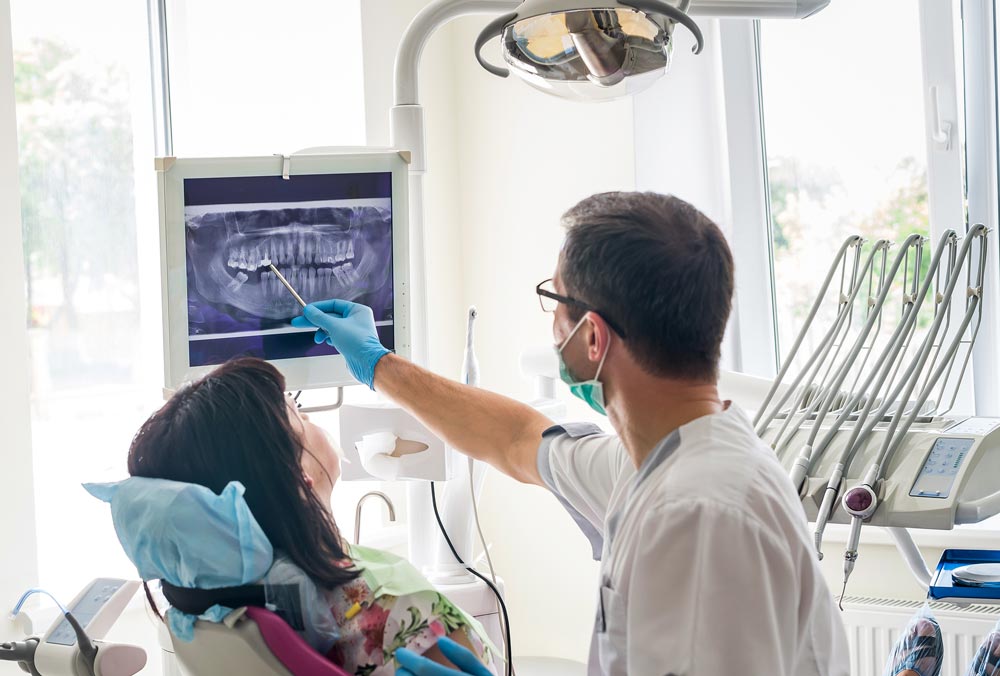Digital X-Rays
Our state-of-the-art technology allows for a faster, safer, and more precise examination of your oral health. Traditional film X-rays can be time-consuming and less environmentally friendly. With digital X-rays, we minimize radiation exposure, instantly view high-quality images, and enhance our ability to diagnose and treat your dental needs with utmost precision. Your well-being is our priority, and digital X-rays ensure that your dental care is as advanced and patient-focused as it can be.
3D Imaging
Northern Lights Laser Dentistry is proud to offer 3D imaging technology. We believe in offering the highest standard of care, and 3D imaging allows us to provide you with the most accurate and detailed diagnostics. From airway assessment to root canal therapy, our cutting-edge 3D imaging technology enhances our ability to diagnose and treat a wide range of dental conditions with unparalleled precision. Your oral health is our top priority, and our commitment to utilizing the latest technology ensures that you receive the most advanced and comprehensive care available. Schedule your appointment today and witness the future of dentistry in action.
Common Questions about Digital X-Rays and 3D Imaging:
How do Digital X-rays differ from traditional X-rays?
Digital X-rays use electronic sensors to capture and store images digitally, offering a more efficient and detailed diagnostic tool compared to traditional film-based X-rays.
Why should I choose digital X-rays for my dental examination?
Digital X-rays reduce radiation exposure, provide instant results, and allow for enhanced image manipulation, aiding in more accurate diagnoses.
Are digital X-rays safe, especially in comparison to traditional X-rays?
Yes, digital X-rays emit significantly less radiation than traditional X-rays, making them a safer option for both patients and dental professionals.Utilizing digital x-rays allows your provider to minimize your exposure to radiation while still providing excellent diagnostic capabilities.
What is the role of 3D imaging in dentistry, and how does it benefit patients?
3D imaging, also known as Cone Beam Computed Tomography (CBCT), provides detailed three-dimensional views of oral structures, enabling precise treatment planning. 3D imaging allows dentists to navigate complex root canal systems more effectively, treatment plan precise implant placement, assess TMJ health, and thoroughly evaluate for signs of pathology.
How does the use of digital X-rays contribute to a more eco-friendly dental practice?
Digital X-rays eliminate the need for chemical processing and reduce the environmental impact associated with traditional film-based X-rays
Can I see the results of my digital X-rays immediately?
Yes, one of the key advantages of digital X-rays is the ability to view images instantly on a computer screen during your appointment. This allows for prompt discussion of findings and treatment options.
Are there any specific preparations required before undergoing a digital X-ray or 3D imaging?
Generally, no special preparations are needed for digital X-rays. However, it’s essential to inform your dentist about any existing health conditions or pregnancy.
How often should I expect to have digital X-rays taken during my routine dental check-ups?
The frequency of digital X-rays depends on individual oral health needs. Typically, they are recommended on an annual basis for routine check ups and cavity evaluation. Additionally, every 3-5 years the roots of the teeth should be evaluated to check the integrity of the bone support or for the presence of any infection, or more frequently on an as needed basis if a patient is having a problem focused exam.
Can digital X-rays help in detecting issues beyond cavities, such as gum disease or jaw disorders?
Yes, digital X-rays are invaluable for detecting a range of dental issues, including gum disease, impacted teeth, and temporomandibular joint (TMJ) disorders.

